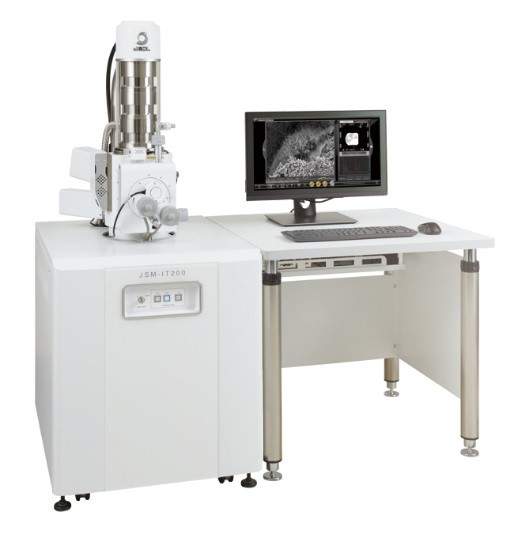
Description
The JEOL JSM-6010 PLUS/LA Scanning Electron Microscope (SEM) is equipped with low and high vacuum modes. Users can switch between low and high vacuum modes with the simple touch of a button and without the need for venting or hardware exchange. Low vacuum mode allows specimens to be placed into the chamber with little or no preparation. This mode is mostly used for biological samples without pre-treatment. High vacuum mode generally requires a sample to be conductive or coated.
Wet, nonconductive, and unprepared samples can be analyzed under the low vacuum mode without the need to be coated. The super hybrid objective lens forms no magnetic field around the sample. Therefore, solid magnetic samples can be analyzed without restriction.
In situ experiments can be performed with the use of a Gatan C1002 cooling stage that can regulate the sample temperature from -185 °C to 200 °C
Capabilities
- Resolution (HV) 50 nm @ 20 kV
- Resolution (LV) 50 nm @ 20 kV
- Magnification x5 to x300,000
- Z (WD) 5 to 48 mm
- T -10° to 90°
- Maximum Specimen Height 30 mm
Location: RFM 1202
Manager: Dr. Joyce Anderson jha39@txstate.edu
Backup: Dr. Casey Smith casey.smith@txstate.edu
Model: JEOL JSM-6010 PLUS/LA
Funded by: The ARSC JEOL SEM equipment purchase was made possible by Professor Tom Myers (startup funds), Emerging Technology Fund (grant), MSEC, Provost, and Research Service Center contributions.
